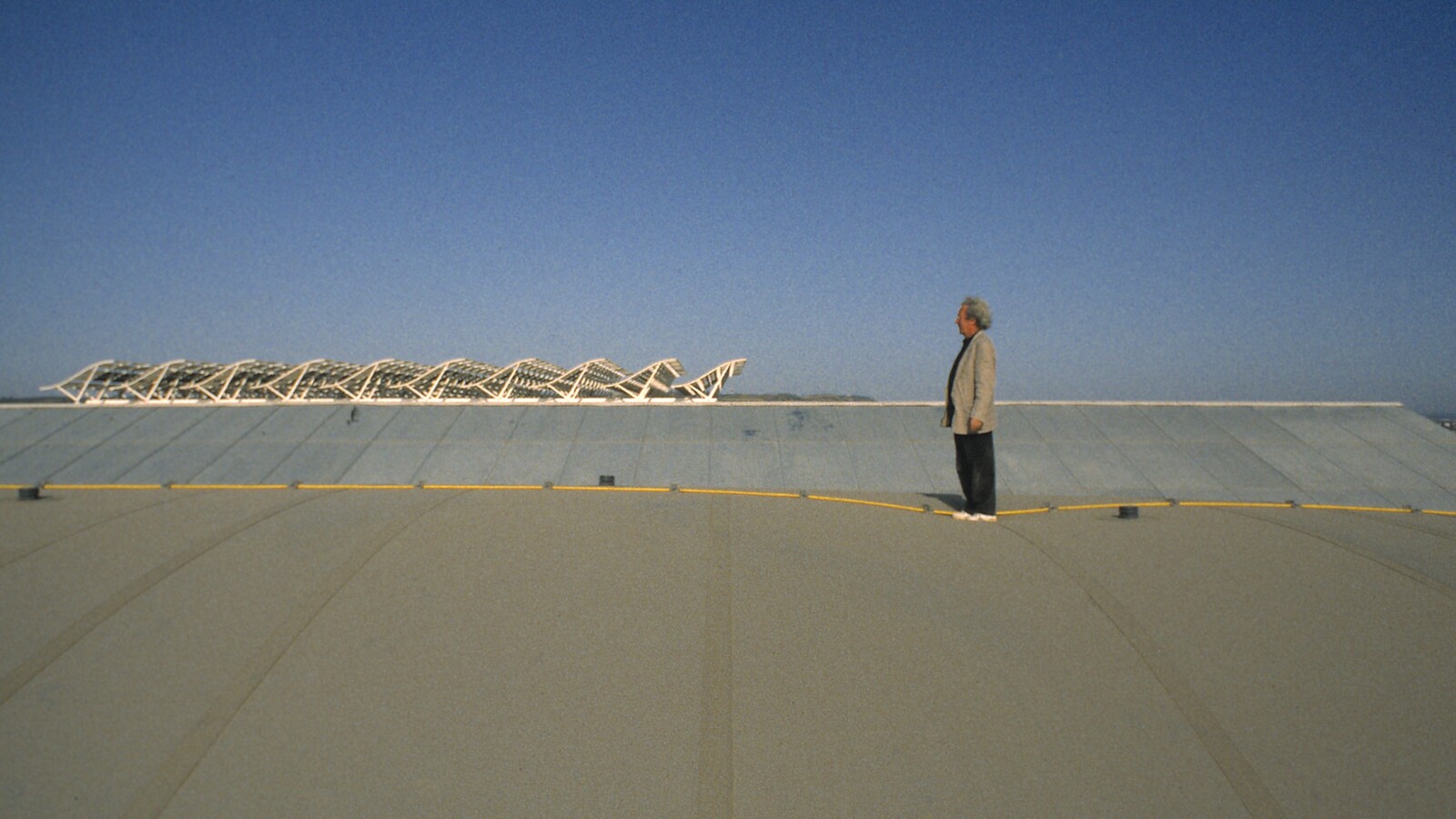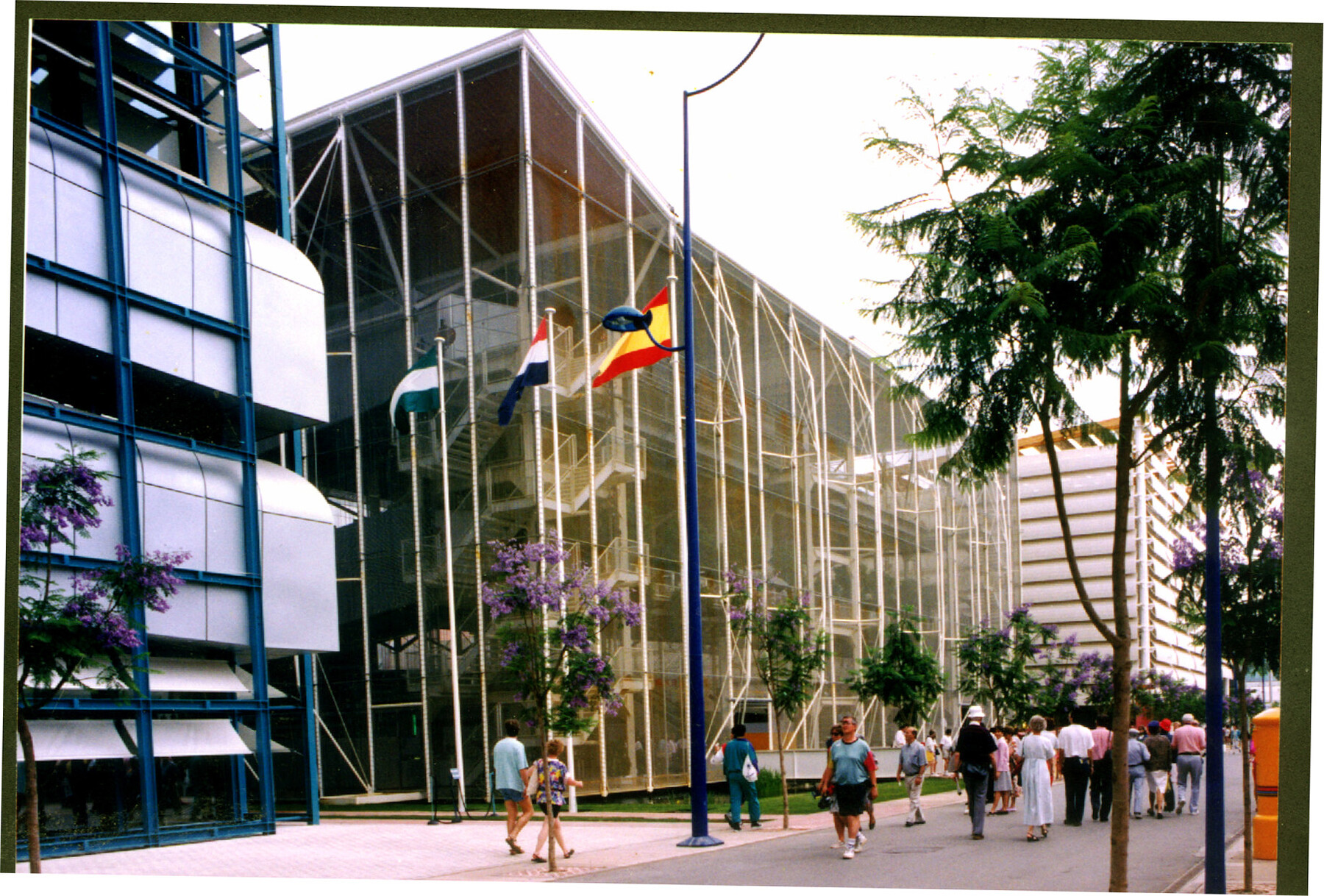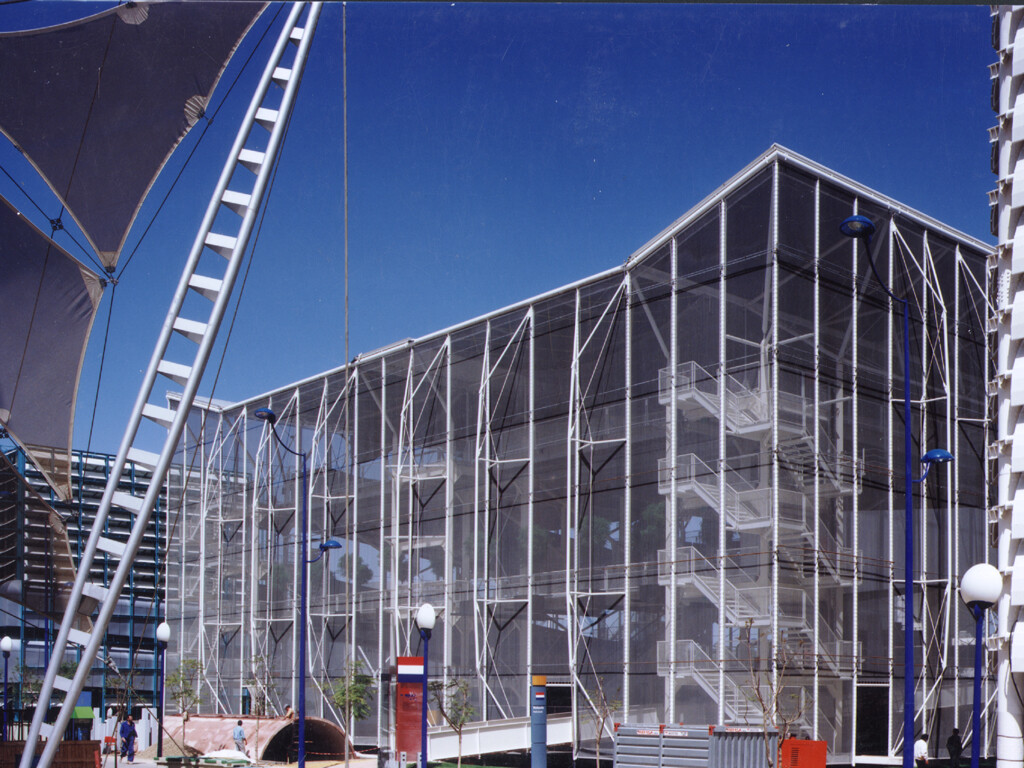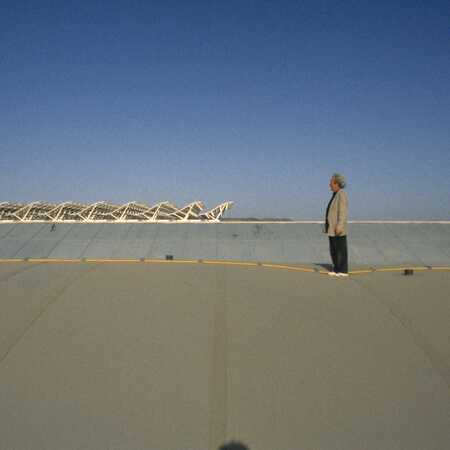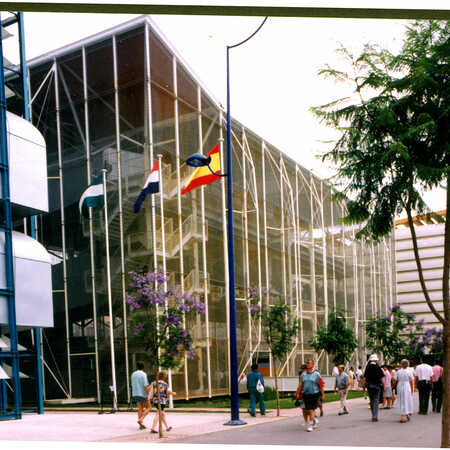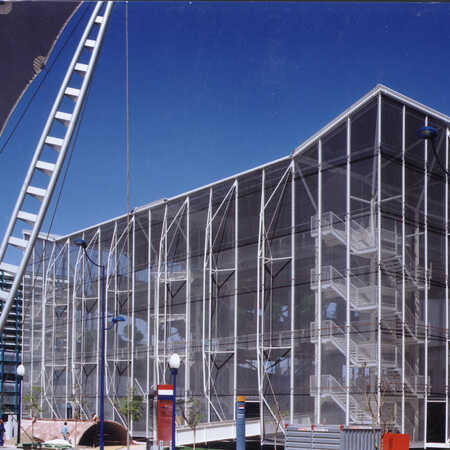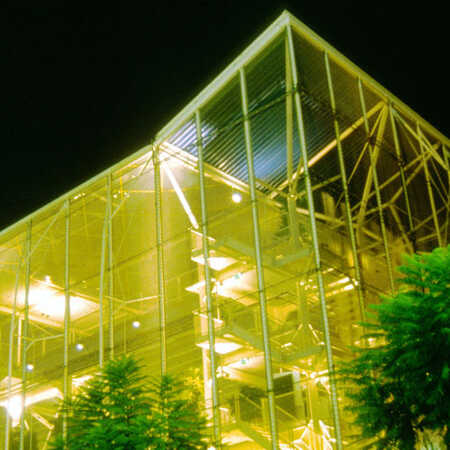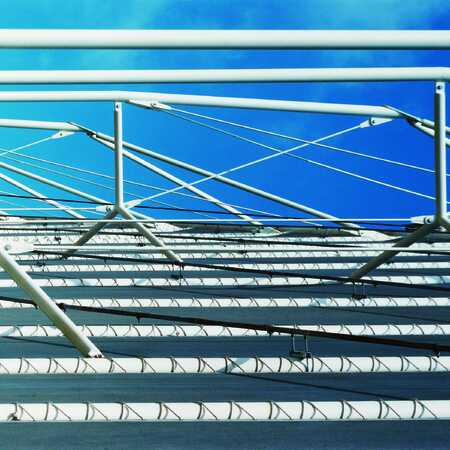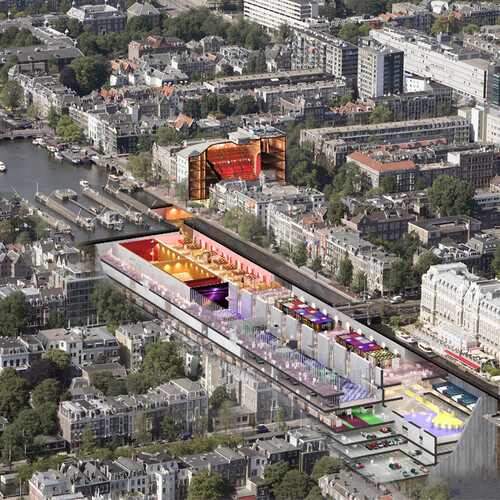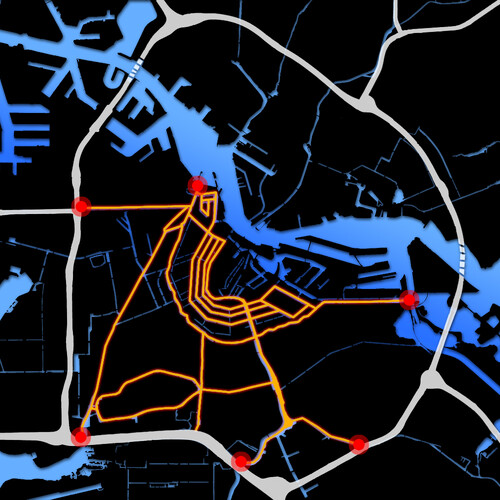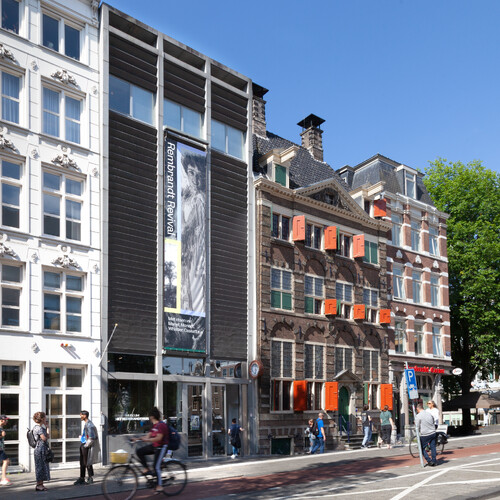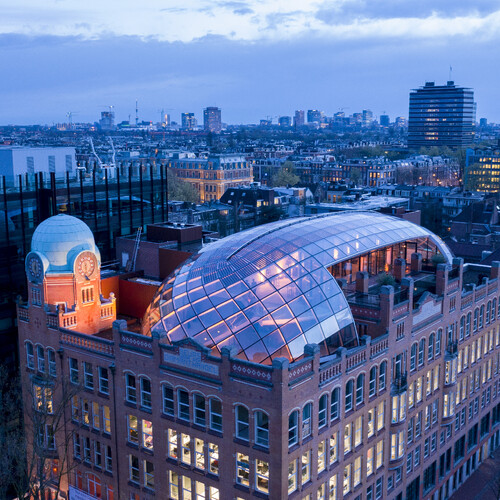Idiosyncratic and ingenious
The building consisted of nine towers, constructed from steel tubing, that supported the floors. Escalators transported the throngs of visitors upwards, past the floors where the Dutch landscape was celebrated and national agriculture and industry was showcased. On the upper floor, in a climate-controlled environment, paintings by famed Dutch masters were shown, from Rembrandt to Mondriaan. A majestic single escalator took the visitors down to the atrium again.
